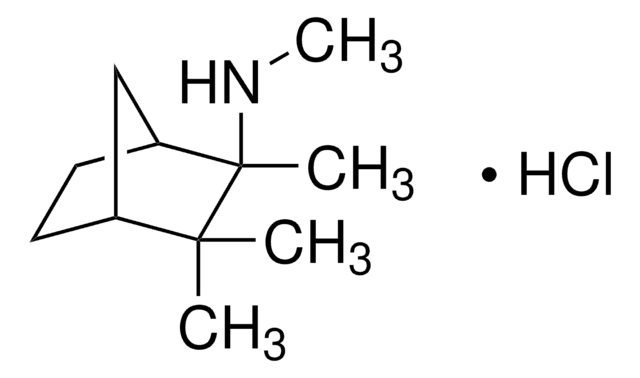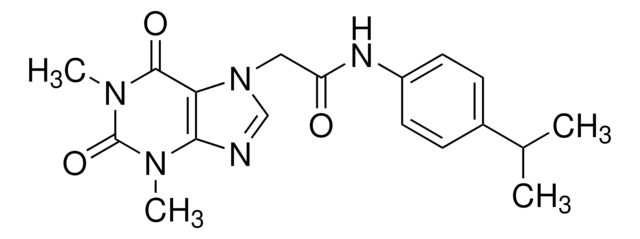M168
Methyllycaconitine citrate salt
from Delphinium brownii seeds, ≥96% (HPLC)
Sinónimos:
MLA, [1α,4(S),6β,14α,16β]-20-Ethyl-1,6,14,16-tetramethoxy-4-[[[2-(3-methyl-2,5-dioxo-1-pyrrolidinyl)benzoyl]oxy]methyl]aconitane-7,8-diol citrate salt
About This Item
Productos recomendados
biological source
Delphinium brownii seeds
Quality Level
assay
≥96% (HPLC)
color
white
solubility
H2O: 42 mg/mL
storage temp.
−20°C
SMILES string
O=C(OC[C@]12[C@@]([C@]3([C@H](CC1)OC)[C@@H]4N(C2)CC)([H])[C@@H]([C@]4(O)[C@]5(O)[C@]6([H])[C@@]3([H])C[C@@]([C@H](C5)OC)([H])[C@@H]6OC)OC)C7=CC=CC=C7N8C([C@@H](C)CC8=O)=O.OC(CC(CC(O)=O)(C(O)=O)O)=O
InChI
1S/C37H50N2O10.C6H8O7/c1-7-38-17-34(18-49-32(42)20-10-8-9-11-23(20)39-26(40)14-19(2)31(39)41)13-12-25(46-4)36-22-15-21-24(45-3)16-35(43,27(22)28(21)47-5)37(44,33(36)38)30(48-6)29(34)36;7-3(8)1-6(13,5(11)12)2-4(9)10/h8-11,19,21-22,24-25,27-30,33,43-44H,7,12-18H2,1-6H3;13H,1-2H2,(H,7,8)(H,9,10)(H,11,12)/t19-,21+,22+,24-,25-,27+,28-,29+,30-,33?,34-,35+,36-,37+;/m0./s1
InChI key
INBLZNJHDLEWPS-DDIMIZGISA-N
Application
- to study its effects on inflammatory response in rats post nicotine treatment
- to block the activity of galantamine
- to study its effects on the hepatic branch of the vagus nerve (hVNS) in rats
Biochem/physiol Actions
Features and Benefits
Storage Class
11 - Combustible Solids
wgk_germany
WGK 3
flash_point_f
Not applicable
flash_point_c
Not applicable
ppe
Eyeshields, Gloves, type N95 (US)
Certificados de análisis (COA)
Busque Certificados de análisis (COA) introduciendo el número de lote del producto. Los números de lote se encuentran en la etiqueta del producto después de las palabras «Lot» o «Batch»
¿Ya tiene este producto?
Encuentre la documentación para los productos que ha comprado recientemente en la Biblioteca de documentos.
Los clientes también vieron
Nuestro equipo de científicos tiene experiencia en todas las áreas de investigación: Ciencias de la vida, Ciencia de los materiales, Síntesis química, Cromatografía, Analítica y muchas otras.
Póngase en contacto con el Servicio técnico









